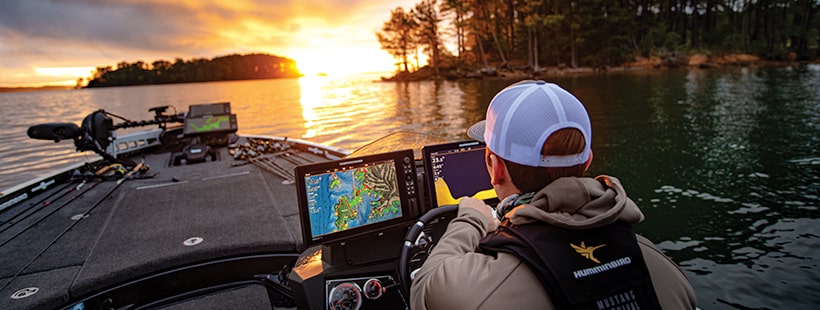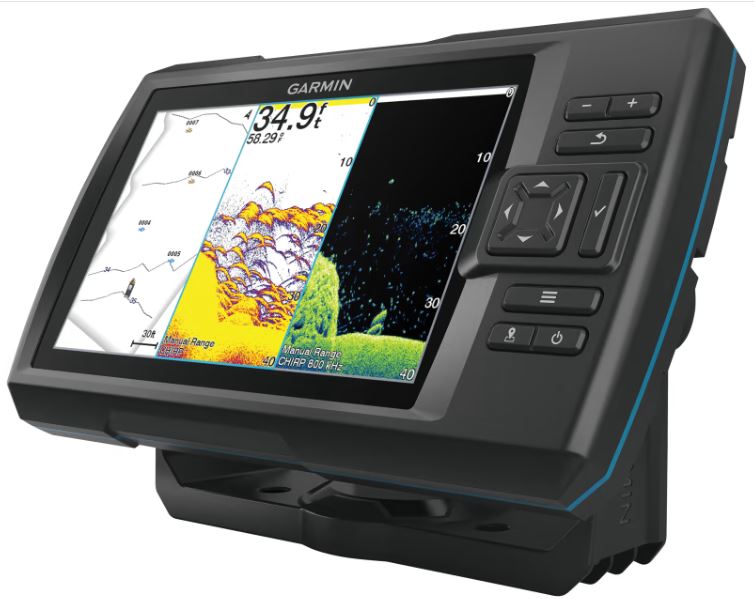Table of Contents
Toggle
In the realm of angling technology, fish finders have emerged as indispensable tools for both seasoned fishermen and casual hobbyists.
With a sea of options available, selecting the best fish finder for the money can be challenging.
In this guide, we navigate through the options, features, and considerations to help you uncover the top contenders in the realm of fish finders that provide exceptional value for your investment.
Whether you’re a dedicated angler or just beginning your aquatic adventures, our insights will steer you towards making an informed choice for an underwater companion.
Fish finders are one of the main bass boat accessories and will make a huge difference in your angling. Any fish finder below $400 dollars can be considered a budget option. The fish finders on this list range from $130 to $419.99.
They are all great and reliable options that are sure to help you reel in more fish.

Price: $399.99

Price: $280.66

Price: $319.99

Price: $129.99

Price: $419.99
A good fish finder is an essential tool for anglers looking to enhance their fishing experience and increase their chances of success.
It employs advanced technology to locate and display underwater objects, including fish, structures, and the contour of the seabed. Several factors contribute to what makes a good fish finder.
The transducer is a crucial component of a fish finder that emits and receives sonar signals. A high-quality transducer ensures accurate readings and better target separation, enabling you to distinguish between different fish and underwater structures.
Fish finders come with various frequency options, such as high, medium, and low. Higher frequencies provide greater detail in shallow water, while lower frequencies penetrate deeper waters. A good fish finder offers multiple frequency options to cater to different fishing environments.
The power output of a fish finder’s sonar signal influences its depth capability and overall performance. Higher power outputs are beneficial for deep-sea fishing, whereas lower power outputs are suitable for shallower waters.
The display screen should be clear, easy to read in various lighting conditions, and offer high resolution. Color displays are preferred as they allow for better differentiation between underwater elements.
A larger screen provides more space for displaying information, making it easier to interpret the data and identify fish and structures. However, screen size should strike a balance between visibility and the portability of the device.
Fish finders with built-in GPS capabilities enable you to mark waypoints, track your route, and find your way back to specific fishing spots. GPS integration enhances your overall fishing experience and helps you keep a record of successful locations.
Many modern fish finders offer mapping and chartplotting features that display underwater contours, structures, and vegetation. These features help you identify potential fish habitats and navigate unfamiliar waters more effectively.
Lastly, consider your budget and the features that matter most to you. While more advanced models tend to have better features, there are affordable fish finders that offer excellent performance for recreational anglers.
For anglers seeking to unravel the mysteries of the underwater world, a fish finder serves as a crucial tool. This sophisticated device employs sonar technology to create visual representations of what lies beneath the water’s surface.
However, interpreting the data displayed on a fish finder can appear complex at first glance. Fear not, here is how to read a fish finder.
1. Understanding the Display: The fish finder’s screen showcases a live feed of sonar readings. Fish and structures appear as distinct shapes or arches, with the size and intensity of these signals indicating the density of objects below.
2. Identifying Fish: Fish icons on the screen might vary depending on the model, but generally, arcs or lines represent fish. Larger arcs often correspond to bigger fish, while smaller arcs indicate smaller fish. Pay attention to the depth at which the fish are detected, as it helps you understand their behavior.
3. Grasping Depth and Bottom Structure: The fish finder displays water depth as a continuous line on the screen. When the line rises, the water shallows, and when it drops, the water deepens. Observe the changes in bottom structure – a hard, solid bottom reflects as a strong, defined line, while a softer bottom appears less distinct.
4. Differentiating Fish from Debris: Sonar can sometimes pick up debris, vegetation, or even air bubbles, which might resemble fish. Fish arcs tend to move and appear as clusters, whereas debris remains stationary. Observing the movement and consistency of the signals can help you differentiate between living targets and non-living elements.
5. Judging Fish Density: The closeness of fish arcs indicates their density. When arcs overlap or appear crowded, it suggests a school of fish. Spacing between arcs implies scattered fish or isolated individuals.
6. Utilizing Color and Color Palettes: Many fish finders employ color to differentiate between different strengths of sonar returns. Warmer colors (red, orange) often indicate stronger signals, while cooler colors (blue, green) represent weaker signals. Familiarize yourself with the color palettes used on your device.
7. Factoring in Water Temperature and Speed: Some advanced fish finders display water temperature and boat speed. Understanding how temperature affects fish behavior and using boat speed to determine the accuracy of the displayed data can greatly enhance your fishing success.
As our journey through the waters of fish finders comes to an end, you’re now equipped to navigate the sea of choices and find the ultimate companion for your fishing endeavors. With your budget in mind and a checklist of must-have features, you’re poised to make a decision that will redefine your angling experiences.
Whether you’re an old salt or a rookie to the fishing game, the key lies in striking that balance between value and performance. With the right fish finder in tow, you’re not just casting lines; you’re unlocking a world of underwater wonders.
So, as you set out on your next fishing expedition, remember the insights you’ve gained. Let your fish finder be your underwater eyes, revealing the hidden movements of fish and the contours of the aquatic landscape. With each blip on the screen, you’ll be writing a new chapter in your angling story.
